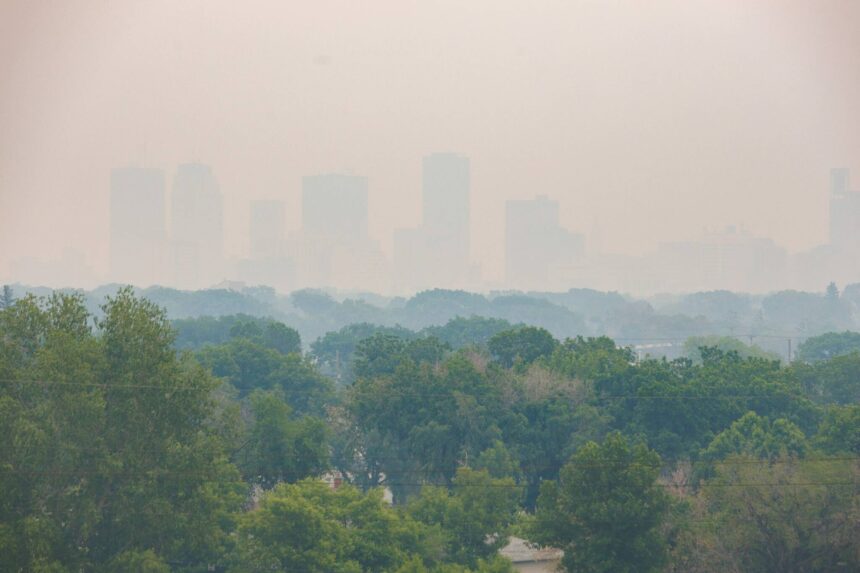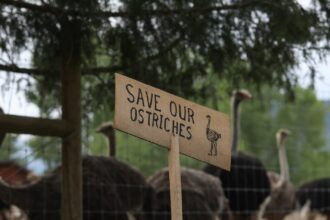The acrid haze hanging over Winnipeg has transformed the city’s skyline into an apocalyptic tableau as unprecedented wildfire smoke continues to choke Manitoba’s capital. With air quality index readings soaring beyond 300 in some areas—classified as “hazardous“—essential services are buckling under the environmental strain, leaving thousands of residents without mail delivery and outdoor workers facing dangerous health risks.
“This isn’t just another smoky summer day,” explains Dr. Mira Patel, pulmonologist at Winnipeg’s Health Sciences Centre. “We’re seeing particulate matter concentrations that can penetrate deep into lung tissue, causing immediate respiratory distress in vulnerable populations and potential long-term damage in otherwise healthy individuals.”
Canada Post confirmed yesterday that mail delivery has been suspended across 23 postal codes throughout Winnipeg and surrounding areas. A spokesperson cited “unprecedented health concerns” for carriers who typically walk 15-20 kilometers daily through the smoke-filled streets. The suspension marks the first time since the 2022 heat dome that mail service has been halted for environmental reasons.
The disruption extends beyond postal services. Construction projects across the city face delays as companies implement mandatory work stoppages when air quality reaches “very unhealthy” thresholds. The Waverley Street overpass project—already behind schedule—now faces additional weeks of delay as workers cannot safely operate in current conditions.
For those who cannot avoid outdoor work, the consequences are becoming increasingly evident. Emergency departments report a 43% increase in respiratory-related visits, with outdoor workers disproportionately affected. Landscapers, traffic directors, and city maintenance crews are particularly vulnerable despite employers providing N95 masks.
“The masks help, but they’re not enough when you’re outside for eight hours straight,” explains Miguel Sanchez, a landscaper with Green Prairie Landscaping. “My eyes burn constantly, and by afternoon, I can barely breathe. But what choice do I have? If I don’t work, I don’t get paid.”
The current smoke crisis stems from an unusually early and intense fire season in northern Manitoba and Saskatchewan, exacerbated by drought conditions that have persisted since late winter. Environment Canada meteorologist Hanna Wong notes that shifting climate patterns have extended the traditional wildfire season.
“What we’re witnessing is consistent with climate projection models,” Wong states. “Warmer winters, earlier spring thaws, and prolonged dry periods create ideal conditions for wildfires to start earlier and burn more intensely than historical norms.”
City officials have established temporary “clean air shelters” in community centers and libraries equipped with industrial-grade air filtration systems. These facilities offer respite for those without access to air conditioning or adequate home filtration, though capacity remains limited relative to need.
The economic impact continues to mount as restaurants report dramatic decreases in patio patronage, outdoor events face cancellations, and productivity drops across sectors. The Winnipeg Chamber of Commerce estimates daily losses exceeding $3.2 million as businesses adjust operations or close temporarily.
As Manitoba’s fire services battle blazes throughout the province’s northern regions, Winnipeg residents face an uncomfortable question: Is this intense smoke season an anomaly, or the new normal for prairie summers? The answer may fundamentally reshape how the city approaches everything from infrastructure design to public health planning in coming years.

























